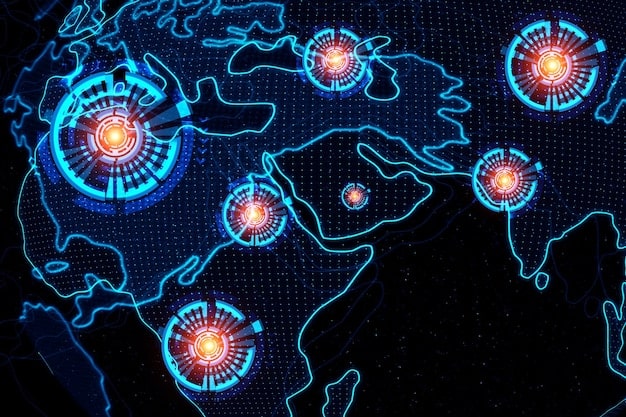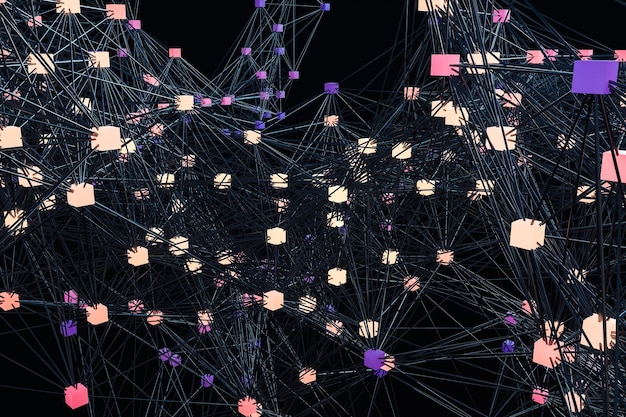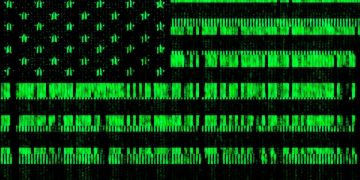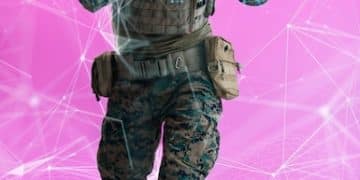The US Military’s Strategy: Combating Disinformation in 2025

The US Military’s Strategy for Combating Disinformation Campaigns in 2025 involves enhancing cyber capabilities, strengthening partnerships with social media platforms, and developing advanced AI-driven tools to identify and neutralize false narratives, safeguarding national security and public trust.
The information landscape is constantly evolving, and the US Military is adapting its tactics to stay ahead. Discover how the US Military’s Strategy for Combating Disinformation Campaigns in 2025 will reshape the fight against fake news and protect national interests.
Understanding the Evolving Threat of Disinformation
Disinformation is no longer a fringe issue; it’s a strategic weapon that can undermine national security and public trust. Understanding its evolving forms and impact is crucial for developing effective countermeasures.
The spread of false information can destabilize societies, influence elections, and even incite violence. The US Military recognizes these threats and is proactively developing strategies to combat them.
The Rise of AI-Generated Disinformation
Artificial intelligence is now capable of creating incredibly realistic fake videos and audio recordings. These “deepfakes” pose a significant challenge to identifying and debunking disinformation.
Social Media’s Role in Amplifying False Narratives
Social media platforms can amplify disinformation at an unprecedented scale. Understanding these dynamics and working with social media companies is vital for mitigating the spread of false information.
- Identifying and labeling disinformation on social media.
- Working with social media platforms to remove fake accounts and bots.
- Increasing media literacy among the public to recognize disinformation.
Combating disinformation requires a multifaceted approach that combines technology, policy, and public awareness. The US Military is committed to developing and implementing innovative strategies to protect the nation from these evolving threats.

Core Pillars of the US Military’s Disinformation Strategy
The US Military’s disinformation strategy is built on several core pillars, including strengthening cyber capabilities, enhancing intelligence gathering, and fostering collaboration with allies.
Each pillar plays a critical role in identifying, tracking, and neutralizing disinformation campaigns before they can inflict significant damage.
Enhanced Cyber Capabilities
Investing in advanced cyber technologies is vital for detecting and countering disinformation. This includes developing AI-driven tools to identify fake accounts and bots.
Strategic Partnerships with Social Media Platforms
Collaborating with social media companies is essential for mitigating the spread of disinformation. This involves sharing threat intelligence and coordinating efforts to remove false narratives.
- Establishing clear communication channels with social media companies.
- Developing protocols for rapidly removing disinformation from platforms.
- Sharing threat intelligence to identify and track disinformation campaigns.
The US Military’s strategy recognizes the importance of a comprehensive approach that integrates technology, partnerships, and public awareness to effectively combat disinformation.
Leveraging Artificial Intelligence to Counter Disinformation
Artificial intelligence is a double-edged sword; it can be used to create disinformation, but it can also be used to counter it. The US Military is investing heavily in AI-driven solutions to detect and neutralize false narratives.
AI can analyze vast amounts of data to identify patterns and anomalies that may indicate disinformation campaigns. This allows for rapid response and mitigation.

AI-Powered Disinformation Detection Tools
Developing AI algorithms to identify fake accounts, bots, and manipulated content is a top priority. These tools can analyze text, images, and videos to detect signs of disinformation.
Predictive Analytics for Anticipating Disinformation Campaigns
AI can also be used to predict where and when disinformation campaigns are likely to emerge. This allows for proactive measures to be taken to prevent the spread of false information.
- Using AI to analyze social media trends and identify potential disinformation hotspots.
- Developing predictive models to anticipate the spread of false narratives.
- Implementing early warning systems to alert the public to potential disinformation campaigns.
By leveraging the power of AI, the US Military can stay ahead of disinformation campaigns and protect the nation from their harmful effects.
The Role of Public Awareness and Media Literacy
Combating disinformation is not just a technological challenge; it’s also a social one. Educating the public about how to identify and critically evaluate information is essential for building resilience against disinformation.
Media literacy programs can empower individuals to recognize and resist disinformation, reducing its impact on society.
Investing in Media Literacy Education
Supporting media literacy programs in schools and communities is crucial for building a more informed and resilient population. These programs should focus on teaching critical thinking skills and how to identify disinformation.
Partnering with Media Organizations to Promote Accurate Reporting
Working with reputable media organizations to promote accurate and unbiased reporting can help counter the spread of disinformation. This includes supporting fact-checking initiatives and promoting responsible journalism.
By empowering the public with the knowledge and skills to critically evaluate information, the US Military can build a stronger defense against disinformation campaigns.
International Collaboration and Allied Efforts
Disinformation is a global problem that requires international cooperation. The US Military is collaborating with allies to share information and coordinate efforts to counter disinformation campaigns.
Sharing best practices and threat intelligence is essential for effectively combating disinformation on a global scale.
Sharing Threat Intelligence with Allies
Exchanging information about disinformation campaigns with allies can help identify and track threat actors, as well as develop effective countermeasures.
Coordinating Efforts to Counter Disinformation Campaigns
Working with allies to coordinate responses to disinformation campaigns can amplify their impact and prevent the spread of false information across borders.
- Establishing joint task forces to counter disinformation campaigns.
- Sharing best practices for identifying and mitigating disinformation.
- Developing common strategies for responding to disinformation threats.
By working together, the US Military and its allies can strengthen their collective defense against disinformation and protect shared interests.
Measuring the Effectiveness of Disinformation Strategies
It’s crucial to measure the effectiveness of disinformation strategies to ensure they are achieving their intended goals. This involves tracking key metrics and analyzing the impact of disinformation campaigns.
Regularly evaluating and refining strategies is essential for staying ahead of evolving disinformation tactics.
Tracking Key Metrics for Disinformation Campaigns
Monitoring the reach and impact of disinformation campaigns can help assess their effectiveness. This includes tracking the spread of false information on social media and measuring public sentiment.
Analyzing the Impact of Disinformation on Society
Assessing the impact of disinformation on public opinion, elections, and national security is crucial for understanding the true cost of these campaigns.
- Conducting surveys to measure public awareness of disinformation.
- Analyzing the impact of disinformation on election outcomes.
- Assessing the damage caused by disinformation to national security.
By measuring the effectiveness of disinformation strategies, the US Military can continuously improve its efforts to protect the nation from these evolving threats. The US Military’s comprehensive strategy underscores the importance of proactive defense measures, technological advancement, and international collaboration in addressing the multifaceted challenge posed by disinformation campaigns in 2025.
| Key Point | Brief Description |
|---|---|
| 🛡️ Cyber Capabilities | Enhancing cyber defenses to detect and neutralize disinformation. |
| 🤝 Partnerships | Collaborating with social media platforms and allies. |
| 🤖 AI Tools | Using AI to identify and combat fake narratives. |
| 📚 Media Literacy | Promoting public awareness and critical thinking skills. |
Frequently Asked Questions
▼
The primary goal is to protect national security and public trust by identifying and neutralizing disinformation campaigns before they can cause significant harm.
▼
The US Military plans to use AI to analyze large datasets, identify fake accounts and bots, and predict the emergence of disinformation campaigns.
▼
Media literacy empowers the public to critically evaluate information, recognize false narratives, and resist the influence of disinformation campaigns.
▼
The US Military is sharing threat intelligence, coordinating efforts to remove disinformation, and establishing clear communication channels with social media companies.
▼
International collaboration is essential for sharing threat intelligence, coordinating responses, and developing common strategies to counter disinformation campaigns on a global scale.
Conclusion
In conclusion, the US Military’s Strategy for Combating Disinformation Campaigns in 2025 represents a proactive and multifaceted approach to addressing the evolving threat of false information. By focusing on enhancing cyber capabilities, leveraging artificial intelligence, promoting public awareness, and fostering international collaboration, the US Military aims to safeguard national security and public trust in an increasingly complex information environment.





